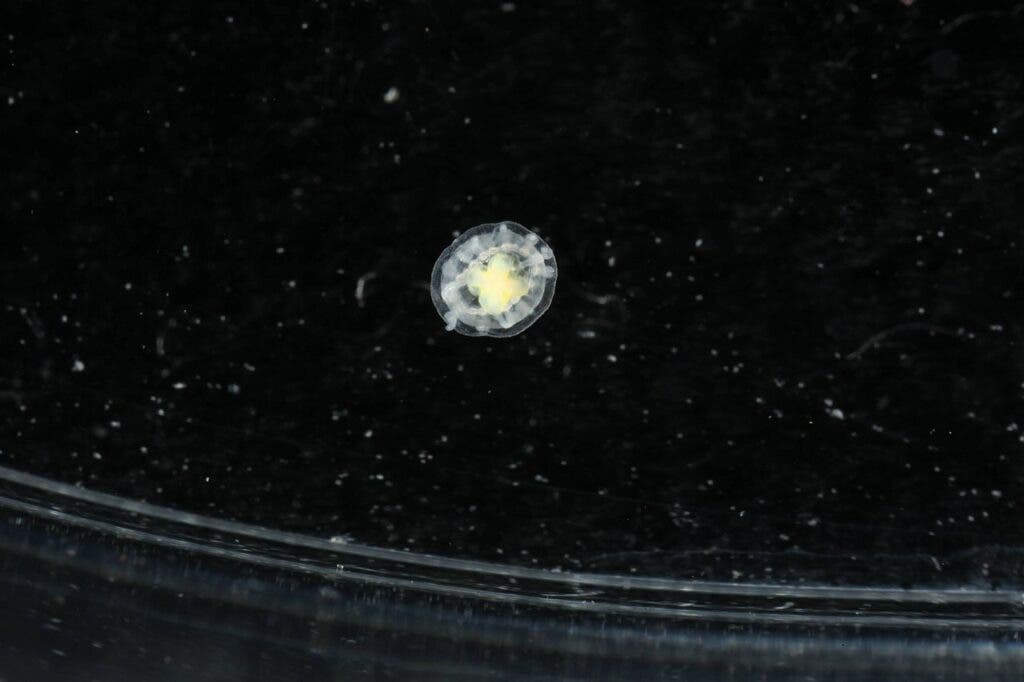It’s one thing to survive in harsh environments, but quite another to just hit the reset button when facing threats and go on living forever. Only one animal is known to have this ability: a species of jellyfish, Turritopsis dohrnii, first discovered in the 1880s. Now, scientists in Spain have unlocked their genetic code, hoping to unearth the secret of their immortality.

Like all jellyfish, Turritopsis dohrnii begins life as a larva (called a planula) which develops from a fertilized egg. A planula first swims and then settles on the sea floor, growing into a cylindrical colony of polyps. These ultimately offspring medusae (the animals we recognize as jellyfish) which grow and become adults in just a matter of weeks.
These small, transparent creatures have extraordinary survival skills. In response to physical damage or starvation, they take a step back in their development process, transforming back into a polyp. In a process that resembles immorality, the new polyp colony eventually blossoms and releases medusae that are identical to the adult. In other words, the creature seems to have mastered the art of immortality.
The species was first described in 1883 and its immortality was accidentally discovered 100 years later in the 1980s. Two students collected Turritopsis polyps, which they monitored in a jar until medusae were released. They thought that the jellyfish would have to mature before producing larvae, but they found many newly settled polyps.
The discovery, supported by the spectacular nickname “immortal jellyfish,” captured the world’s attention. Now, researchers at the University of Oviedo mapped the genetic sequence of Turritopsis dohrnii by comparing it to the one of Turritopsis rubra, a close genetic cousin without the ability to rejuvenate after sexual reproduction.
The immortal jellyfish
Looking at the two medusas, the researchers found that the immortal one had mutations that enabled it to limit cell division and prevent telomeres (the protective caps over the chromosomes) from breaking down. Telomere degradation is a process closely linked to aging, so it makes sense that the “magic” would happen here. The creature also has twice more genes linked with DNA repair and protection than the other medusa.
As well as silencing developmental genes to go back to earlier forms, the researchers found that the immortal jellyfish also activated additional genes that allows the reverted cells to “re-specialize” as the colonies branched off into swimming individuals once again.

Marine biologist Maria Pascual Torner, one of the study authors, told the Wall Street Journal that it’s unlikely humans will have one day the same anti-aging skill as the T. dohrnii. “It’s a mistake to think we will have immortality like this jellyfish, because we are not jellyfish,” Torner said. Still, the findings could help to better understand the process of ageing, she added.
Monty Graham, a jellyfish expert and director of the Florida Institute of Oceanography, agreed, saying the research doesn’t have immediate commercial value. “We can’t look at it as, hey, we are going to harvest these jellyfish and turn it into a skin cream,” said Graham, who was not involved in the study, per Reuters.
The study was published in the journal PNAS.


